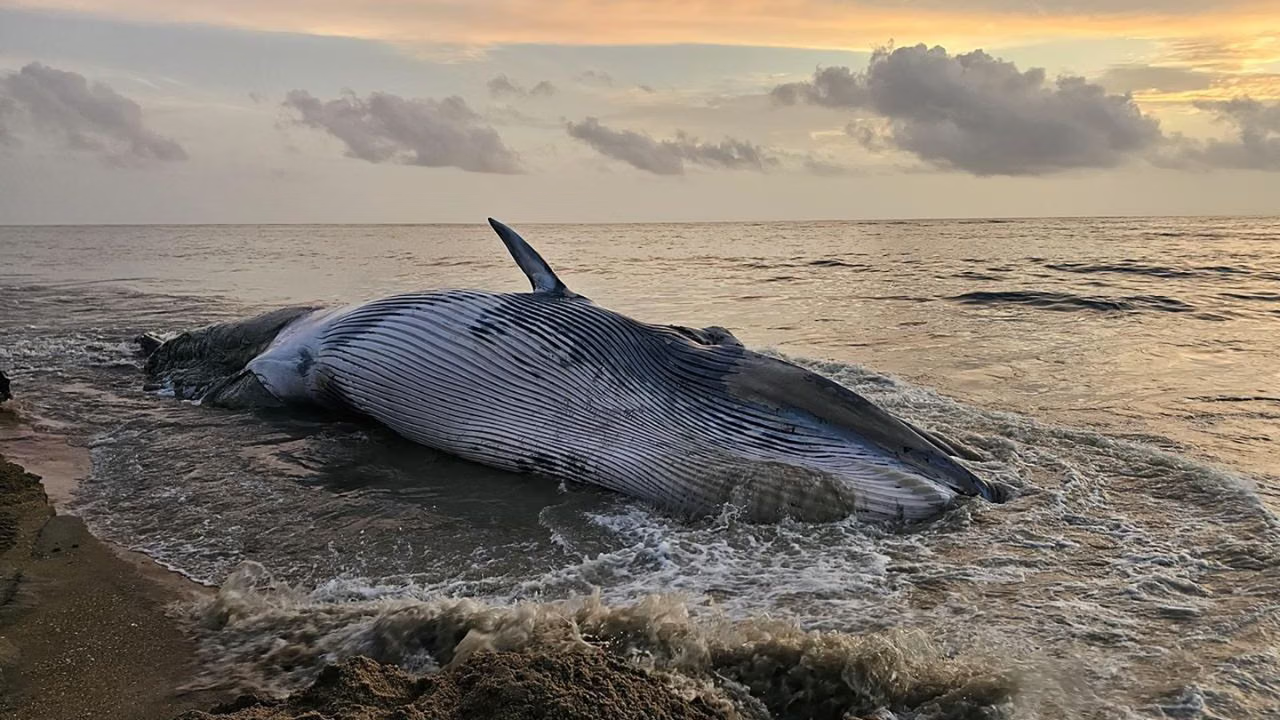Wednesday, 3 December 2025

Climate change, shipping traffic, and ecosystem shifts converge to threaten marine giants
India’s southwest coast is witnessing a dramatic rise in whale strandings, with incidents up tenfold over the past decade, according to a landmark study by the ICAR–Central Marine Fisheries Research Institute (CMFRI). The findings, covering two decades of data from 2004 to 2023, reveal that strandings—once a rare occurrence—have jumped from 0.3 per cent of recorded incidents between 2003 and 2013 to 3 per cent in the past decade.
The spike is being driven by a volatile mix of changing ocean conditions, human activity, and environmental disruption. Kerala, Karnataka, and Goa have emerged as stranding hotspots, with shallow coastal shelves, dense shipping lanes, and intense fishing activity amplifying risks. Noise pollution, ship strikes, and habitat degradation top the list of threats to these already vulnerable marine mammals.
The Bryde’s whale is the most frequently stranded species, though blue whale strandings are also documented. Genetic testing has revealed two distinct Bryde’s whale populations in Indian waters, underscoring the region’s biodiversity importance. In 2023 alone, nine strandings were reported—most between August and November—making it the worst year in recent memory.
Monsoon-linked productivity may be part of the story. The CMFRI team found a correlation between strandings and chlorophyll-a concentrations—an indicator of plankton blooms that occur during southwest monsoon upwelling. These nutrient surges attract fish and, in turn, whales closer to shore. But warming seas and intensified converging currents are disrupting these natural cycles, increasing the risk of disorientation and beaching.
Lead author Dr. R. Ratheesh Kumar, principal investigator of India’s Marine Mammal Stock Assessments project, warns that “region-specific conservation strategies are critical to protect these species in one of the country’s richest oceanic zones.” The study, published in Regional Studies in Marine Science, calls for predictive models using satellite data—tracking chlorophyll levels, wind patterns, and sea surface temperatures—to forecast stranding risks.
CMFRI has outlined a multi-pronged response. It recommends the establishment of real-time alert systems to warn authorities and local fishers of potential strandings, coupled with the creation of marine megafauna conservation networks to coordinate rapid interventions. Training programmes should be rolled out to equip fishers and coastal officials with the skills to manage rescue and release operations safely. Additionally, strengthening citizen science platforms is seen as critical, enabling faster detection and reporting through mobile applications and social media channels.
The findings place fresh urgency on aligning India’s blue economy growth with marine biodiversity safeguards. As shipping volumes and coastal development accelerate, scientists warn that without a robust early-warning and response framework, the country risks turning its biologically rich coasts into graveyards for some of the ocean’s most iconic species.